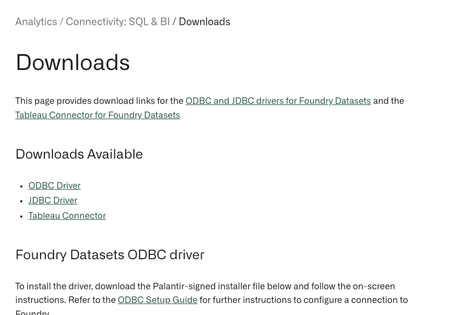Announcements
Checkpoints: Justifications for security changes
Date published: 2023-03-31
With Checkpoints, platform governance and administration teams may require additional justification for certain actions within Foundry. These details are then recorded for audit purposes. Over time, we're gradually increasing the number of user actions for which these justifications can be enabled.
Foundry now supports requiring these justifications for critical security changes such as updating members of groups, updating members with access to markings, granting roles on a project, and more. New Checkpoints types were introduced to make this possible.
Platform administrators may configure their organization settings to collect justifications for select security changes. For instance, administrators may decide that giving access to a marking must be justified – in which case a user attempting this will be prompted for a justification.
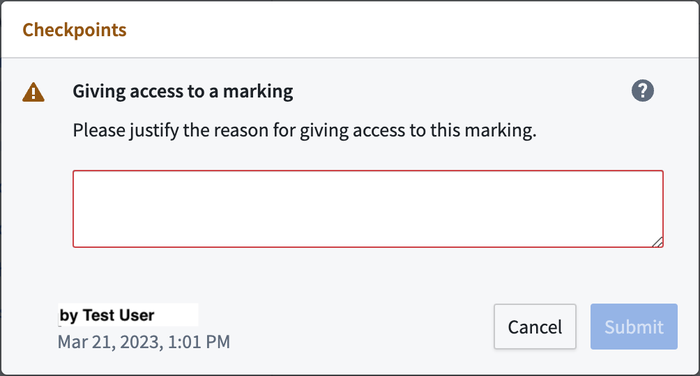
For all Checkpoint types, the justification prompt is fully customizable; an administrator may also decide which specific security changes require justification, customize the prompt title and content, etc.
Currently justifications are collected from the user making the change; in practice this is often an administrator with elevated permissions make a change on behalf of another user with restricted permissions. We are working on further functionality in Approvals - currently available for project access requests - to standardize this request-based flow for permissions changes.
Introducing Scoped Sessions: Sandbox data access
Date published: 2023-03-31
Scoped sessions enable a user to pick a subset of pre-defined Markings to access during their Foundry session to create a visual separation between different types of work. Scoped sessions function across both the Foundry file system and ontology workspaces.
Scoped sessions improve platform security by reducing the chances of accidental cross-pollination of work across different purposes in Foundry. For example, a user working across multiple healthcare research projects might be prohibited by regulation or best practice from using data from Project B in the context of Project A, even though they have permissions to view the data in both projects. With scoped sessions, the user chooses scope to work within when logging in and Foundry will display only the resources associated with the active scope.
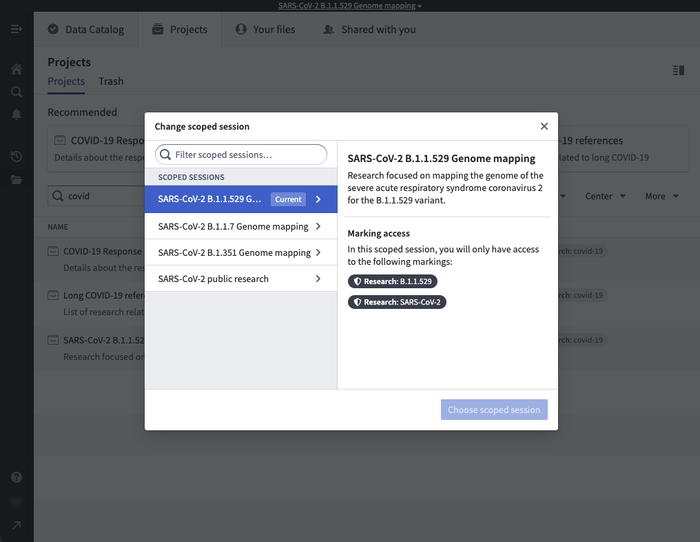
By siloing a user’s session to the purpose they’re currently working on, the risk of cross-pollination is reduced and the user can work with greater confidence. For example, scoped sessions can help enable the following patterns and best practices:
- Ensure validity of work and avoid cross-pollination: Researchers may work across multiple research projects with distinct access to data and resources. In this case, scoped sessions can help prevent accidentally using research from another project, which would compromise the validity of the research at hand.
- Data Protection/Privacy Requirements: Foundry can be configured to comply with data protection regulations, such as GDPR and HIPAA, where scoped sessions provide an additional tool to enforce purpose limitation and data minimization to sensitive data.
- Limit users’ platform visibility: At large enterprises, a large amount of accessible data might be excessive to users trying to accomplish a specific goal. Scoped sessions can help a user focus on their primary objective given the restricted visibility.
Configuring scoped sessions
An administrator can configure scoped sessions for your Organization from within Control Panel. Scoped sessions should be configured carefully since they can affect all users who log into Foundry and may potentially lead to the display of a Foundry workspace banner. For this reason, scoped sessions are disabled by default. To get started reviewing your Markings configuration and enable scoped session, follow the guidance in the documentation and reach out to a Palantir support engineer with additional questions.
Slate: Public Applications
Date published: 2023-03-30
Reach your audience where most needed
Use Slate’s point-and-click features to build public Palantir Foundry applications for your partners, vendors, and customers that can be accessed without the requirement of a Palantir Foundry account.
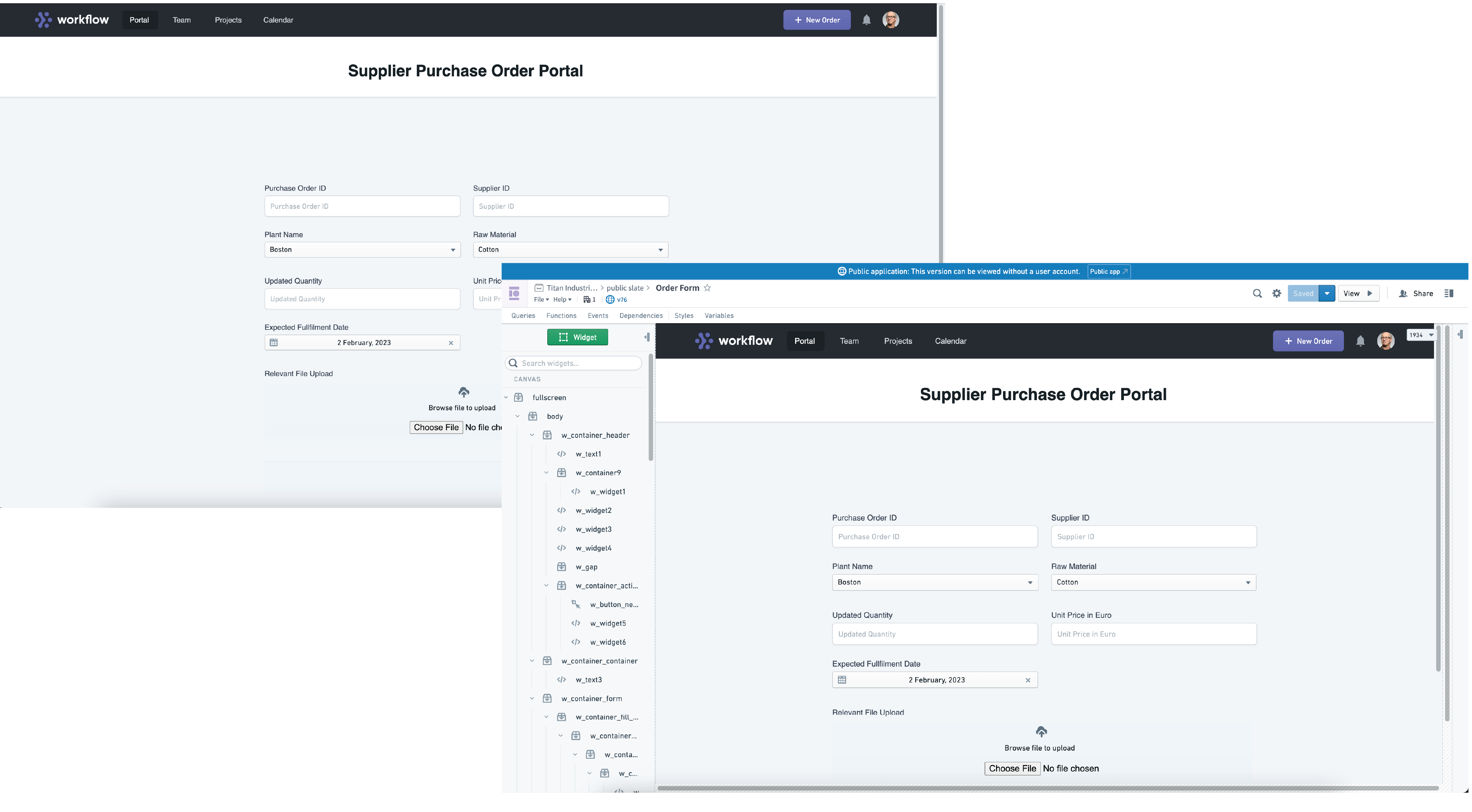
Application builders can directly build public apps via Slate that directly eliminates the overhead effort of onboarding and maintaining Foundry accounts for a given intended audience. Build a public application and benefit from dynamic resource scaling, Foundry’s security primitives, without needing to setting up specific data connection configurations for single-purpose applications.
Directly to your dataset, by your design
Typical applications made in Palantir Foundry require a Foundry account to be authenticated prior to access. Now, when an application is built specifically as a public application, anyone with the application’s URL can use it without the requirement of having had prior training nor onboarding to the Foundry platform. Public applications are suitable for collecting input from a wide group of users, with submissions or uploads directly piped into a Foundry dataset for transformations and further analysis in the Foundry application suite. For example, you can build robust surveys, onboard users, and accept data uploads, amongst the many possibilities.
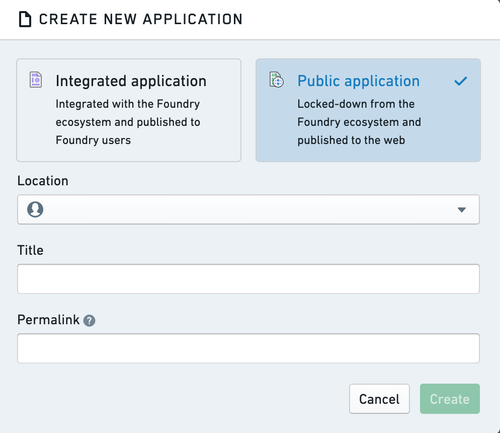
Additionally, through Slate’s built-in support for cascading stylesheets (CSS), application builders can tailor the look and feel of the public application to match a company’s style guidelines giving users a seamless experience without even needing a Foundry account. The screenshot depicts a sample public Slate application that can be used for suppliers of a company to submit purchase orders, just one of many potential uses for the flexibility provided by Slate’s public application capability.
When should I create a Public application?
Consider building a public application powered by Slate when the audience for your website is the public and where you may have a need to directly pipe user-submitted information into your Foundry datasets.
As public applications are accessed directly by a URI, personalized URIs and metric tracking functionalities are not yet supported. We recommend building an integrated application in lieu if these requirements are important for your use case.
To start building a public application, review our documentation on how to build a public application and select Create new application > Public application in Slate.
Introducing Foundry Rules: Democratize business logic
Date published: 2023-03-13
Define the logic that runs your business
Foundry Rules provides a streamlined approach to codifying and managing business logic. With a point-and-click, low-code interface, users of all technical backgrounds are able to create and apply rules to relevant data. These rules can be applied to take action across relevant systems to power critical workflows.
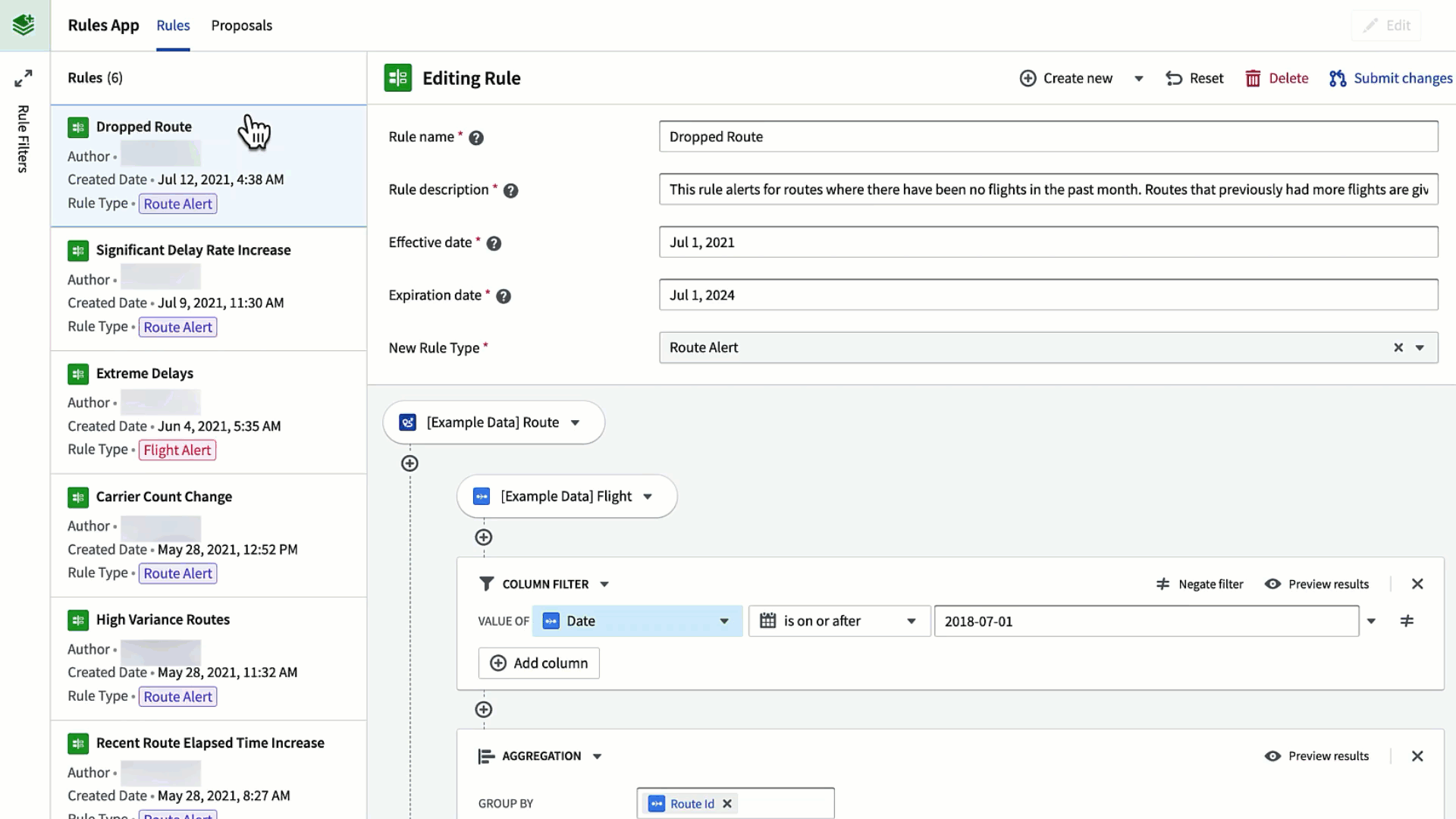
Backed by Foundry’s core data primitives, including objects, time series, and streaming, we built Foundry Rules to automate what is often a time-consuming workflow, freeing up more time to focus on building and powering use cases such as equipment monitoring, anti-money laundering, and more.
Define business logic with scalable oversight
Complex enterprises comprised of cross-functional teams often run into the dislocation of expertise between those that understand an organization’s operational logic and those that can codify and implement that expertise. Foundry Rules aims to bridge that divide by both enabling users across operational units and IT teams alike.
IT teams are empowered to provide baselines with which users can interact, and set up, review, and run rules at scale, essentially equipping nontechnical users with tools that are typically restricted to software developers.
Simultaneously, end users now have the agency to:
- Take control of data driven processes with workflow automation
- Skip daily non-scalable spreadsheet based manual processes
- Power time-critical workflows with real-time streaming capabilities
Foundry Rules can expedite building and collaboration, saving both time and effort.
Complex logic, simple deployment
The streamlined experience of a single configuration page allows for rapid deployment of business logic by users from all technical levels. What formerly required technical support from engineers is now readily accessible, through an intuitive UI. Foundry Rules features:
- Simplified deployment: Deploy a new Foundry Rules workflow end-to-end in minutes, all through a single configuration page.
- Deploy to Pipelines: Foundry Rules can be run out of the box without interacting with pipeline code, however allows for flexibility to write custom code as needed.
- Real-Time Streaming: Native streaming support means Foundry Rules can support extremely time sensitive workflows.
- Painless modifications and maintenance: Robust versioning and descriptive debugging means any modifications to running rules can be made with ease.

When should I use Foundry Rules?
Use Foundry Rules to set up workflows based on expertise driven business logic such as Alerting, Categorization, and Task Generation. Foundry Rules can also improve collaboration between IT teams and end users across these workflows through defined guide rails.
For investigative workflows or experimental "what-if" workflows, we continue to recommend Quiver and Contour for an in-depth look at the dataset. Important insights gained from these workflows can still be codified as business logic in Foundry Rules at a later stage.
Set up some Foundry Rules today by visiting Foundry Rules documentation and learn more on our product page ↗.
Map Layers: Raster tiles
Date published: 2023-03-10
The Map Layer Editor now allows users to add raster tile data to layers via a point-and-click UI. Once configured, map layers are available for users in the Map application as well as the Map widget in Workshop.
This new UI removes the need to write complex and error-prone Mapbox JSON styles to add raster images to layers. Instead, configure a raster layer by pointing to a map tile server URL - note that it may be necessary for an admistrator to configure network ingress and egress for the server address range - and setting additional parameters with the sliders.
Use raster layers to visualize satellite imagery, weather radar, custom maps, or any other image-based data! Learn more about configuring map layers in the docs.
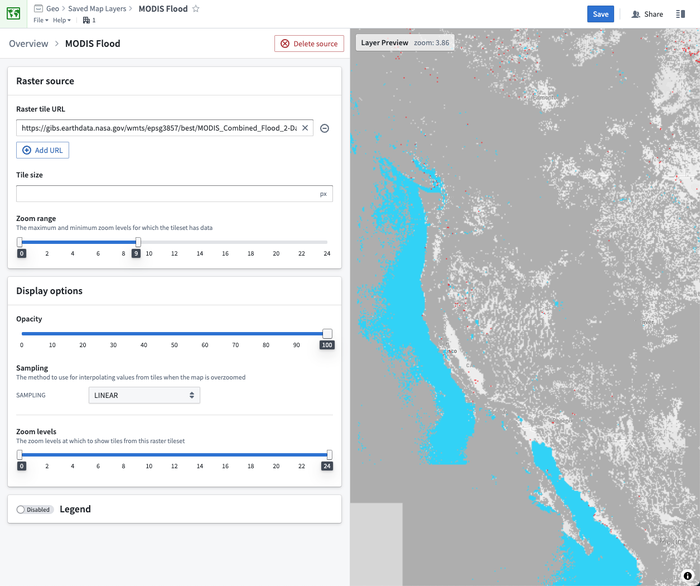
Palantir Learning
Date published: 2023-03-02
Learn Foundry, grow your skills, and get certified
Palantir Foundry is a powerful, operational decision-making platform. Through its use, our customers and partners are able to drive positive impact on the problems that matter most at organizations across the world. Palantir Learning ↗ is built for Foundry users of all technical skill levels to maximize their understanding of the many applications within Foundry. The self-paced training delivered through Palantir Learning is designed to take you from little or no Foundry knowledge to a strong, base-level understanding of the platform and its potential applications.
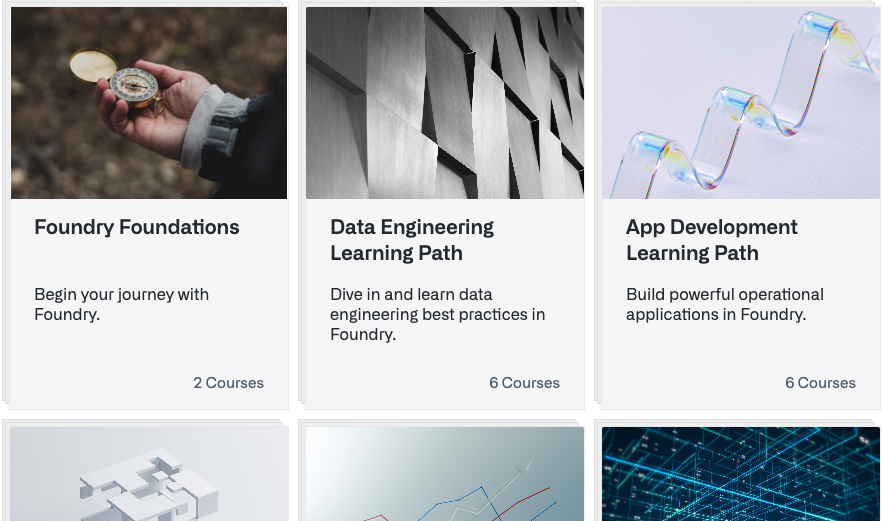
Course catalog
Role-based learning paths: Opt for one of multiple role-based learning paths ↗ which take you on a self-paced course with interactive tutorials, videos, knowledge checks, badges, and certifications. Currently, available role-based learning paths include Data Engineering ↗, App Development ↗, Data Analyst ↗, and Platform Administration ↗. These end-to-end paths train users for both foundational Foundry usage and recommended best practices for various use cases.
Course catalog & video library: Register to Palantir Learning to gain full access to our suite of courses via the Course Catalog ↗. Some courses are most useful when following along with a Foundry stack, however, all users have on-demand access to our full library of video content, including previously exclusive standalone material. The Foundry Foundations quiz can be completed by anyone regardless of access to a Foundry enrollment.
Earn badges and get certified
Badges: Many of our courses feature the opportunity to earn a Palantir Badge. Earn your first Palantir Badge by completing the Foundry Foundations course and quiz, without needing access to a Foundry enrollment. The Data Engineer and Application Developer learning paths, which have interactive elements requiring access to a Foundry enrollment, feature opportunities to pass ~60-minute quizzes consisting of realistic, scenario-based questions which will earn you Associate-level Badges to demonstrate your Foundry skill to the world.
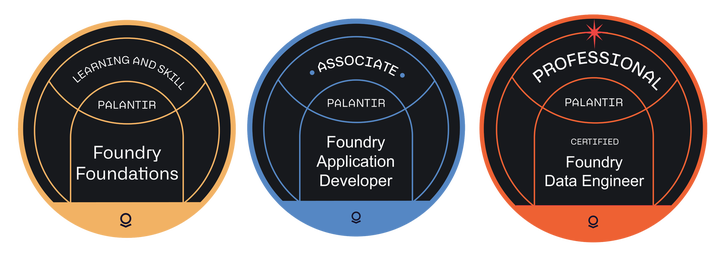
Certifications: While Palantir badges signify your completion of our self-paced courses, Palantir Certifications are used to highlight and award your Foundry competency and are earned by passing a comprehensive assessment. We recommend 3-6 months of hands-on Foundry experience before attempting a Certification exam. When you are ready, review the Certification exam study guides ↗, then purchase and register for one of our Foundry role-based Certification exams.
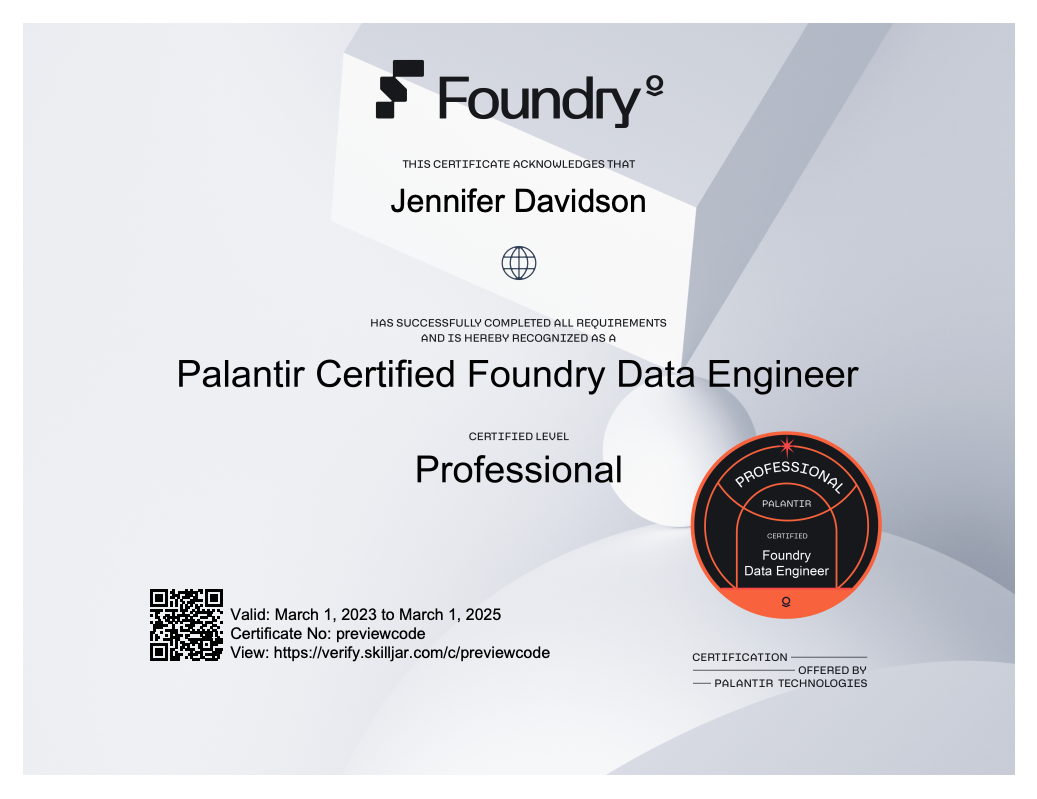
The Palantir Foundry Certification exams are accessed 24/7 via a secure online platform. The Certification exams require a 70% passing grade and consists of:
- Around 60 questions tailored to assess knowledge for the related role
- 120 minutes to complete the exam
Each Associate Badge and Professional Certification document issued by Palantir is marked with a validity date and a unique link that can be used to prove the document’s authenticity.
When should I use Palantir Learning?
Palantir Learning is for technical users of varying skill levels to build fundamental knowledge and skills for working in Foundry. Whether you are looking to grow your career, level up your technical skillset, or simply round out your knowledge, leverage readily-available learning materials at your pace. Earn badges for course completion. Achieve a professional Certification by putting your Foundry skills to the test and passing the comprehensive exam.
Get started on your learning journey today. Register and earn your first Palantir Badge on Palantir Learning ↗.
Additional highlights
Administration | Foundry Zero State Home App
Introducing Zero State New Builder home page | The new zero-state builder home page experience is now available in Control Panel. Read more about orientation and navigation.
Analytics | Contour
Mapbox V4 configuration | The Contour map board now supports the ability to configure Mapbox V4 choropleth layers.
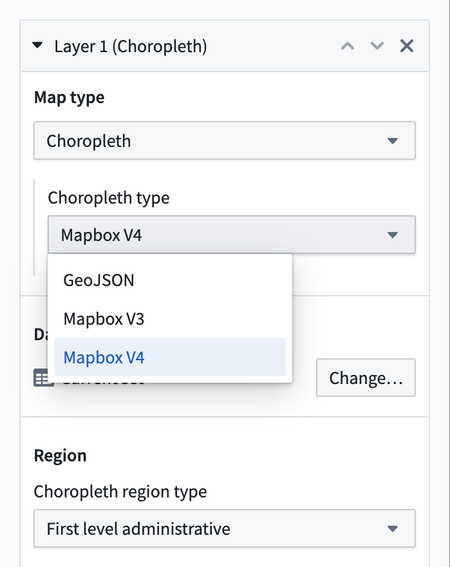
Hide parameters from dashboard views | Parameters can now be hidden from dashboard views. To do so, edit the parameter, flip the "Do not display in dashboard" switch, and then save the parameter.
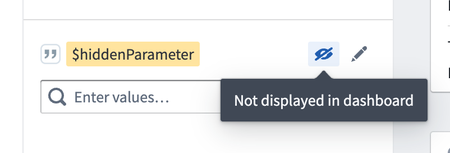
Export dashboards as PDFs | Contour Dashboards can now be exported as PDFs. To export a dashboard, select the Export dashboard option located in the header, then select Landscape or Portrait to set the PDF orientation.
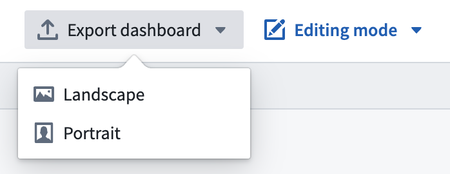
Analytics | Quiver
Add filter by property action to object set table column header | It is now possible to filter an object set by property values directly from the property column header in the object set card, including quick options for exact match and null filtering. Selecting Add filter where... adds an object set filter card with that property selected as the input.

Show range description in selection | The Range Selection menu on a time series chart now also shows a formatted version of the duration of the range when time ranges (rather than value ranges) are selected in time series charts.
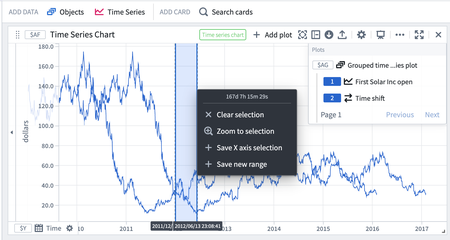
New object set card property picker | Improved the object set card property picker to simplify and shorten property selection and ordering. Added quick action buttons to show "All", "Prominent", or "Clear all" properties, added the ability to search by property name, streamlined adding multiple properties and added drag and drop re-ordering of properties. Lastly, the property picker was moved into the top right corner of the card and shows how many properties are visible out of the total properties on the object.

Header bar redesign | We have simplified the Quiver analysis header bar, streamlining the workspace and focusing the header more on adding data as opposed to showing all possible charts. We also removed other entry points for adding data in the workspace, such as from the analysis contents and the top resource header. It is still possible to search over all available cards using the "Search cards" button.

Action button fixes/improvements | The Action Button card now has a header like all cards that enables users to configure, hide, delete, or add to dashboard directly from the canvas.

Add usability improvements to default columns of transform table join | When configuring a transform table join, the "input" table in the Editor now has all columns imported by default, and both the "input" and "right" tables will display a red border around the selection box if no columns have been chosen. The number of columns available for selection is also presented. These improvements are intended to help remind users that columns need to be imported into the table before they can be selected, removed, or reordered through the column picker.
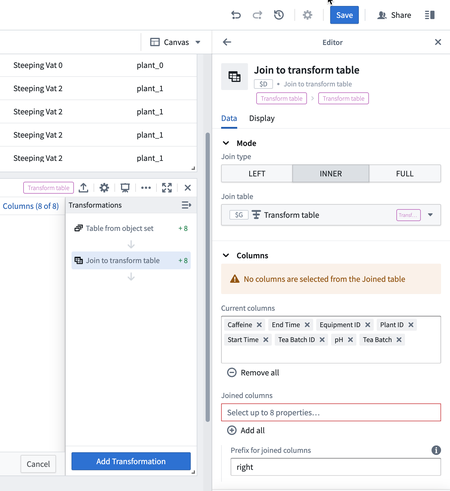
App Building | Slate
Paste widgets into container from the sidebar | Paste widgets previously copied into the clipboard directly into containers via the context menu in the sidebar.

App Building | Workshop
Pivot Table: User-configurable visibility for groupings and aggregations | Within the Pivot Table widget, builders can now configure row-level groupings and aggregations that are hidden by default. Users in View mode can then toggle visibility of any configured row-level grouping or aggregation.
Pivot Table: user-expandable groupings | Within the Pivot Table widget, builders can now configure hidden groupings that can be manually expanded by users in View mode. As an example, a Pivot Table could default to display state-level groupings; a user could then enter a selected state to reveal more specific, city-level groupings.
Chart XY: No-code chart series transforms | In the Chart XY widget, series can now be defined as set of transformations. For example, a series can be configured to show: SUM(prop_a) / AVG(prop_b) * 100. As a result of these new front-end options, builders should be less likely to require custom Typescript code and Function-backed series to achieve most common series transformations. In the example below, the blue line series displays the percentage (%) of loan amounts currently repaid through a sequence of chained transformations.
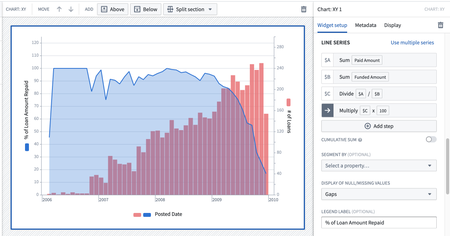
Data Integration | Pipeline Builder
New transform available: Apply to multiple columns | Pipeline development often requires applying the same operations to multiple columns, like normalizing all columns or casting data to a certain type. On top of this, the set of columns is often manually defined instead of automatically including relevant schema changes. This functionality is especially critical for data quality workflows, where multi-column parsing capabilities can greatly increase the speed of addressing common issues across an entire dataset. To support these development patterns, we have added two new transforms: Apply to multiple columns and Aggregate multiple columns. These are powerful "for loop" functions which let you shortcut the work above by applying an expression to any set of your input columns.
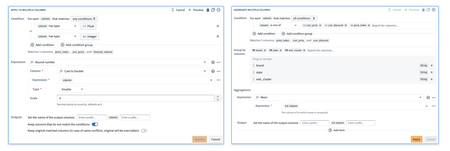
Foundry S3-compatible API
S3-compatible API for Foundry datasets | An S3-compatible API [Beta] for reading and writing files inside Foundry datasets is now available. The API is compatible with many standard S3 clients.
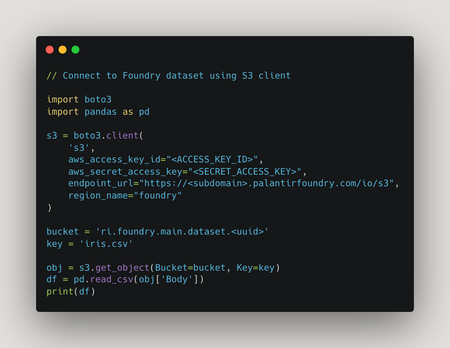
Ontology | Map
Measurements on Map annotations | Annotations in the Map application can now be configured to display measurements of their area, perimeter, or length.
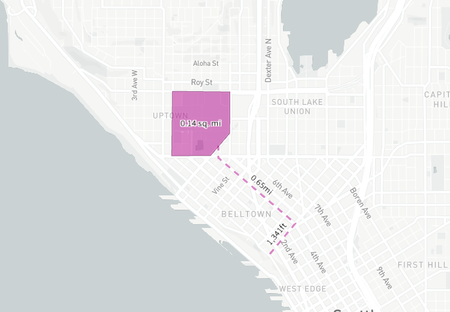
Annotation improvements | Map annotations in the Map application now have enhanced functionality such as the ability to be assigned to groups where each group can have different styling parameters (color, opacity, size, et cetera). There is also a new annotation type, Line, that allows users to draw line annotations on the map.
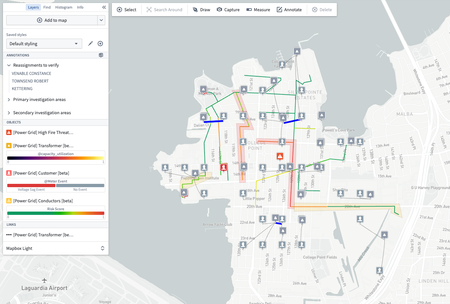
Ontology | Ontology Management
Ontology Manager: Fast reloads after saving | A performance improvement to Ontology Manager was released. This improvement increases the reload speed of the Ontology after saving. Expect a 50% improvement in reload time with this update.
Object type groups now generally available | Introducing object type groups. Groups are labels that help categorize your object types and may be added or removed directly from the Ontology Manager metadata widget. Groups are searchable and filterable in the Ontology Manager, and are used in the Object Explorer overview page to categorize object types.
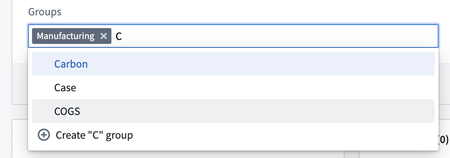
Ontology | Vertex
Edge drawing improvements | Improved the edge drawing experience on diagrams. Users can now see the edge as it is being drawn. In addition to the existing orthogonal lines, users can draw arbitrary connectors using fixed 30/60/90 degree angles.
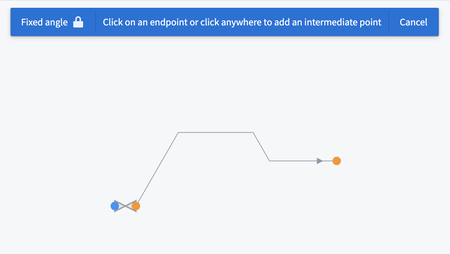
Enable export to png | Added a button to the bottom left controls that exports the current sub-graph as a full-resolution PNG.

Security | Checkpoints
New Checkpoint Types for Group, Marking, Reference, and Role Management | Introduced new Checkpoint types for updating members of groups, members with access to markings, role grants, project references, and allowed markings in project constraints.
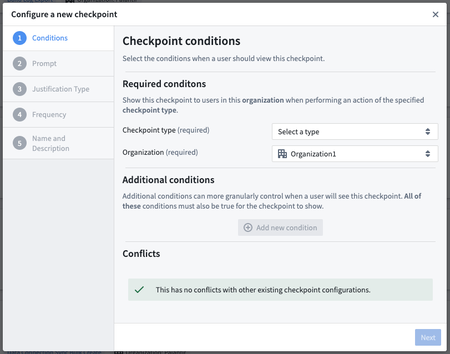
Security | Projects
Check access functionality is available to more users | The Check access panel is now available to more users. Previously this functionality was only available to administrative users.
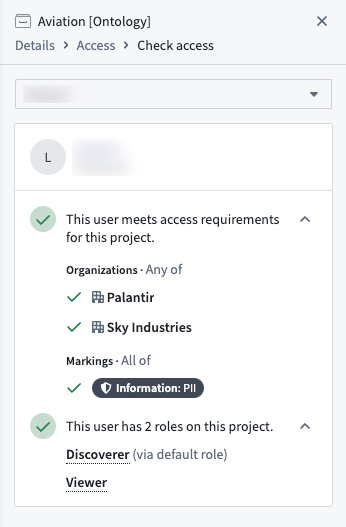
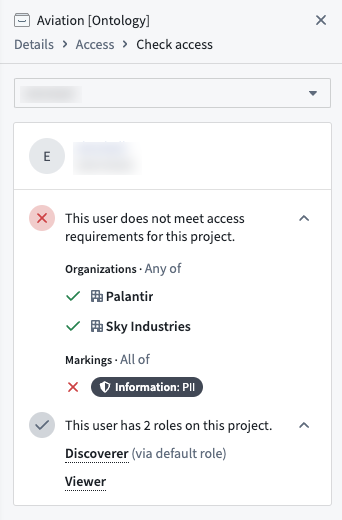
Foundry SQL Server: Connectors
Public download links for SQL connectors for datasets | Drivers and connectors for Foundry datasets (JDBC, ODBC, and Tableau) are now available for public download from Connectivity: SQL & BI: Downloads. The previous downloads page within the Foundry platform is deprecated and will be removed.
